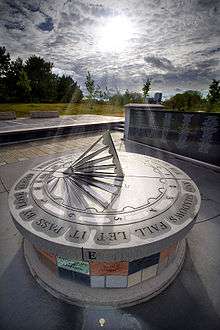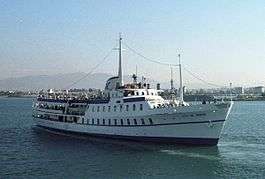Terrorism in Europe



There is a long history of terrorism in Europe. This has often been linked to nationalist and separatist movements, while other acts have been related to political extremism (including anarchism, far-right and far-left extremism) or religious extremism.
Prevention
Pre-World War II
European states were at the fore of plans for an international criminal court under the League of Nations in the 1930s, working through the Committee for the Repression of Terrorism (CRT). The CRT sought to define terrorism and get nation's domestic policies to support anti-terrorism activities. Opposition by Britain and tensions over fascism in Germany and Italy limited the final proposals.[1]
Europol

European cooperation in the field of counter-terrorism include the European Police Office (Europol), an EU agency, and Interpol. TREVI was an early example of EU cooperation in this field.
The main transnational activity to combat terrorism in recent years has been through Europol. They have categorised acts of terrorism that have either failed, been foiled or been successfully executed within the European Union (EU) as either pertaining to religious issues, right wing, left wing or separatist movements. The field is subject to considerable cooperation among national authorities.
Individual countries
In July 2014 the Government of France introduced legislation to combat terrorism by toughening surveillance, making it lawful to detain individuals linked to radical "Islamist" groups, and to block Internet sites that incite anti-Semitism, terrorism and hatred. The country's Interior Minister Bernard Cazeneuve revealed 600 French nationals were in Syria at the time or planned to go there. The bill includes a ban on foreign travel for up to six months for those believed to hold terrorist sympathies, provides for the confiscation and invalidation of passports, and prohibits airlines from allowing such individuals to fly.[2]
From 2005, the United Kingdom government introduced the CONTEST strategy, which seeks to improve co-operation between security services, and other public and private organisations.[3] This includes four strands, namely Pursue, (seeking to apprehend potential terrorists), Prevent, (seeking to reduce risks of 'radicalisation', deter potential terrorists and share information), Protect, (seeking to ensure the security of potential targets and organisations is optimised), and Prepare, (seeking to ensure an effective response in the immediate aftermath of any attack). Similar strategies have been adopted by other countries across the European Union, and there have been increases in co-operation between nations and security forces.
History
Definitions
There is an overlap between terrorism and various other forms of conflict and violent action, including civil wars[4] or non-international armed conflicts. This is the case with several significant non-international conflicts in Europe, where there thus can be dispute as to what counts as terrorism: examples include the Irish War of Independence (1919–21), the breakup of Yugoslavia and subsequent conflicts,[5] the First (1994-6) and Second Chechen Wars (1999-2009), and the War of Dagestan (1999).
Trend
- Statistics from 2006 to 2013 by affiliation
 Attacks
Attacks Arrests
Arrests
Terrorism in Europe around the beginning of the twentieth century was often associated with anarchism.[6][7]
Terrorism within the European Communities since 1951 has often been linked to separatist movements, notably the Chechen separatism in Russia, the Irish Republican Army within the United Kingdom, and Euskadi Ta Askatasuna within Spain. Other perpetrators have been linked to far-right and far-left extremism, environmental extremism and anarchism. Since 2001, there has been an increase in attacks linked to extremist Islamist groups, particularly in France. Many separatist terrorist activities also have a religious angle, as, for example, with Chechen separatism in Russia. The internationally co-ordinated element has seen increasing attempts by governments to seek to weaken extremist ideology, particularly Islamist extremism.
It remains the case that the majority of deaths from terrorism do not occur in the "West". When the Al Qaeda attacks against the United States in 2001 are excluded, only 0.5% of all deaths from terrorism have occurred in Western countries – European nations, United States, Canada and Australia – in the past fifteen years.[8] However, there have been recent increases in the number of high-fatality attacks. There had been a decrease in the number of overall fatalities from terrorist attacks between 1990 and 2015, compared to those between 1970 and 1990.[9] Prior to 1990, on average 150 people died each year from terrorist attacks; this figure would be even higher if the large number of people who died in 1988 from the Pan Am 2013 bombing were included. From 1990, an average of a little under 50 people died each year. However, this figure has begun to increase again from 2011, with the attacks by far-right extremist Anders Breivik in Norway, and Islamist extremist attacks in France in 2015 and 2016.
Europol has published an annual trend report on terrorist attacks (including failed, foiled, and completed attacks) and terrorist related arrests in the EU since 2006.[10] The reports identify that perpetrators' known or suspected affiliations have been disparate in nature. Europol break these down into five categories: jihadist terrorism (previously termed "religiously-inspired terrorism"); ethno-nationalist and separatist terrorism; left-wing and anarchist terrorism; right-wing terrorism; and single-issue terrorism. Europol's reports do not provide a breakdown of the proportion of attacks that have been completed or the type of damage inflicted. According to these data the vast majority of terrorist attacks in the EU between 2006 and 2013 are affiliated with ethno-national or separatist motives, followed by left-wing attacks and those that are registered as 'unspecified'. A significant number of terror attacks are motivated religiously or associated with right-wing groups. However, among those arrested on terror-related crimes most are religiously motivated and form the largest group, followed by separatist related terror suspects.
In 2015, a total of 211 completed, failed, or foiled terrorist attacks were reported by EU states, resulting in 151 fatalities (of which 148 were in France, with 130 of them occurring during the November 2015 Paris attacks.) and over 360 people injured. As in previous years, separatist attacks accounted for the largest proportion (65), followed by jihadist attacks (17). The latter, however, caused the largest number of fatalities (150) and injuries (250). The United Kingdom reported the largest number of attacks (103), but did not provide statistics on suspected affiliation.[11] Tackling jihadist terrorism threats has become an over-riding priority for security services, although many commentators express concerns that the risk of far-right terrorism is currently being underestimated.[12]
Lists of incidents
Deadliest incidents
The following is a list of terrorist incidents in Europe which resulted in at least ten deaths. It lists attacks on civilians by non-state actors that are widely referred to as terrorism. It excludes transcontinental countries such as Turkey and Russia, which have most of their landmass in another continent. For incidents in Russia, see Terrorism in Russia and for incidents in Istanbul, see Terror attacks in Istanbul.
- Key: motivation
Nationalist/Separatist Islamist Right-wing Left-wing Other
Terrorism by country and region
- Terrorist activity in Belgium
- Terrorist incidents in Denmark
- Terrorist incidents in France
- Terrorism in Germany
- Terrorist incidents in Greece
- Terrorism in Italy (country)
- Terrorist incidents in Norway
- Terrorism in Russia
- Terrorism in Serbia
- Terrorism in the United Kingdom
- Terrorism in Yugoslavia
- Years of Lead (Italy)
See also
- Islamic terrorism in Europe
- Islamic terrorism in Europe (2014–present)
- List of non-state terrorist incidents
- Terrorism in the United States
References
- ↑ "International Terrorism in the 1920s and '30s: The Response of European States through the League of Nations and the Attempt to Create an International Criminal Court – Oxford Scholarship". doi:10.1093/acprof:oso/9780199660285.001.0001/acprof-9780199660285-chapter-6.
- ↑ "Legislation to crack down on jihadists planned by France". France News.Net. Retrieved 10 July 2014.
- ↑ "The United Kingdom's Strategy for Countering Terrorism: Annual Report 2015" (PDF). Her Majesty's Stationary Office. Retrieved 13 August 2016.
- ↑ "Defining Civil War by Examining Post-Soviet Conflicts" by Pavel K. Baev, Terrorism and Political Violence, 19(2), 247-268. doi:10.1080/09546550701246965
- ↑ "Approaches to political violence and terrorism in former Yugoslavia 1" by Florian Bieber, Journal of Southern Europe and the Balkans 2003, 5(1): 39-51
- ↑ The History of Terrorism: From Antiquity to Al Qaeda by Gérard Chaliand & Arnaud Blin
- 1 2 Richard Jensen, "Daggers, rifles and dynamite: Anarchist terrorism in nineteenth century Europe." Terrorism and Political Violence 2004, 16(1):116-53
- ↑ "Global Terrorism Index: Measuring and Understanding the Impact of Terrorism" (PDF). Institute for Economics and Peace. Retrieved 13 August 2016.
- ↑ "Is Terrorism in Europe at a Historical High?". World Economic Forum. Retrieved 13 August 2016.
- ↑ Europol statistics, europol.europa.eu, retrieved 15 January 2015
- ↑ European Union Terrorism Situation and Trend Report 2016, europol.europa.eu, retrieved 13 August 2016
- ↑ Focus on Islamist terror plots overlooks threat from far right – report, The Guardian, retrieved 13 August 2016
- ↑ The Making of Ireland: A History, James Lydon, p.308
- 1 2 "Terrorism in Barcelona and Its Impact on Spanish Politics 1904-1909", by J. Romero Maura, Past & Present 1968, 41:130-183
- ↑ Megas G. The Boatmen of Thesalloniki. The Bulgarian anarchist group and the bomb attacks of 1903, Troxalia, 1994 ISBN 960-7022-47-5
- ↑ "PALACE BOMBED, 100 KILLED; Bessarabian Conspirators Accused of Outrage at Bolgard". The New York Times. 14 December 1921. Retrieved 2011-10-15.
- ↑ "Sofia Church Terror Attack Vie for Bulgaria Top Event". The Free Library. 2010. Retrieved 13 January 2017.
- ↑ (in Italian) Una strage con troppi misteri, La Sicilia, May 1, 2011
- ↑ Pech, Marie-Estelle (7 January 2015). "L'attentat le plus meurtrier depuis Vitry-Le-François en 1961" [The deadliest attack since Vitry-Le-François in 1961]. Le Figaro (in French). Archived from the original on 8 January 2015. Retrieved 14 January 2017. ()
- ↑ Flight International, 5 September 1968, p.361
- ↑ Clutterbuck, Richard (1990). Terrorism, Drugs & Crime in Europe After 1992. p. 27. ISBN 978-0-415-61620-1. Retrieved 14 January 2017.
- ↑ "Criminal Occurrence description". Aviation Safety Network. Retrieved 14 January 2017.
- ↑ Taylor, Peter (1999). Loyalists. Bloomsbury Publishing. p. 88. ISBN 0-7475-4519-7.
- ↑ "Criminal Occurrence description". Aviation Safety Network. Retrieved 14 January 2017.
- ↑ Cosgrove, Ben; Bhowmick, Nilanjana. "Terror at the Olympics: Munich, 1972". Time. Retrieved 14 January 2017.
- ↑ RAND Corporation (3 April 2001). "TKB Incident Page: Other Group attacked Airports & Airlines target (Dec. 17, 1973, Italy)". MIPT Terrorism Knowledge Base. Oklahoma City, Oklahoma: Memorial Institute for the Prevention of Terrorism. Archived from the original on 14 January 2017. Retrieved 14 January 2017.
- ↑ Sutton, Malcolm. "CAIN: Sutton Index of Deaths".
- ↑ "1974 – Car bombs explode in Dublin and Monaghan, killing 34 people". Stair na hÉireann – History of Ireland. Retrieved 14 January 2017.
- ↑ Bocca, Giorgio. Gli anni del terrorismo (in Italian). pp. 291–293.
- ↑ "AAR 75-07 Boeing 707 Ionian Sea Crash" (PDF). Airdisaster.com. Retrieved January 14, 2017.
- ↑ Ediciones El País. "Atentado de la calle del Correo: un caso similar todavía no aclarado, El Pais, 27 May 1979". EL PAÍS. Retrieved 14 January 2017.
- ↑ The Birmingham Framework -Six Innocent Men Framed for the Birmingham Bombings; Fr. Denis Faul and Fr. Raymond Murray (1976)
- ↑ "BBC ON THIS DAY - 5 - 1976: Ten dead in Northern Ireland ambush".
- ↑ "BBC ON THIS DAY - 18 - 1978: Belfast bomb suspects rounded up".
- ↑ "Civil Guard website listing the Civil Guard retired high rank member died in the fire as an ETA victim".
- ↑ "BBC ON THIS DAY - 2 - 1980: Bologna blast leaves dozens dead".
- ↑ Gerber, Larry (29 September 1980). "Neo-Nazi Group Suspected in Munich Oktoberfest Bombing". The Lewiston Daily Sun. Retrieved 14 January 2017.
- ↑ "1982: IRA bombs cause carnage in London". BBC: On This Day. Retrieved 24 March 2017.
- ↑ "INLA almost called off attack". Irish News. 8 December 2007. Retrieved 14 January 2017.
- ↑ (in Italian) Rapido 904: "Un intreccio tra mafia, camorra e politica", Il Fatto Quotidiano, January 13, 2017.
- ↑ "Al-Qaeda suspect linked to 1985 Madrid bombing". Retrieved 14 January 2017.
- ↑ "The Bombing of Air India Flight 182". CBC News Online. 25 September 2006. Archived from the original on 14 January 2017. Retrieved 14 January 2017.
- ↑ "EgyptAir Flight 648." Aviation Safety Network. Retrieved on January 14, 2017.
- ↑ "Abu Nidal Organization (ANO) attacked Airports & Airlines target (Dec. 27, 1985, Austria)". Archived from the original on 14 January 2017. Retrieved 27 December 2005.
- ↑ 25 años del atentado de la plaza de la República Dominicana, El Diario Montanes, 14 January 2017
- ↑ "Bomb explodes in Barcelona". Los Angeles Times. 19 June 1987. Retrieved 2017-01-14.
- ↑ "Enniskillen bomb victim dies after 13-year coma". The Guardian. Retrieved 14 January 2017.
- ↑ El País: Zaragoza: cinco ataúdes blancos 2 August 2009 accessed 14 January 2017
- ↑ "Attacked By Terrorists 11 Dead, – Terror Attack". Cruiseshipdeaths.com. Retrieved 14 January 2017.
- ↑ "Clipper Maid of the Seas: Remembering those on flight 103". panamair.org. 2007. Archived from the original on 26 March 2008. Retrieved 14 January 2017.
- ↑ Malcolm Sutton's Index of Deaths from the Conflict in Ireland: 23 October 1993. Conflict Archive on the Internet (CAIN).
- ↑ "Man cleared over Omagh bombing". CNN.com. 20 December 2007. Retrieved 14 January 2017.
- ↑ "Serbs killed in Kosovo pilgrimage". BBC. Retrieved 25 January 2017.
- ↑ "elmundo.es. Documento: Auto del 11-M".
- ↑ ZoomNews (in spanish). The 192nd victim (Laura Vega) died in 2014, after a decade in coma in a hospital of Madrid. She was the last hospitalized injured person.
- ↑ "Indepth London Attacks". BBC News. Retrieved 14 January 2017.
- ↑ "В Беларуси умерла еще одна жертва теракта". podrobnosti.ua. 25 April 2011. Retrieved 3 April 2017.
- ↑ Seierstad, Asne (2016). One of Us: The Story of Anders Breivik and the Massacre in Norway. p. 5. Retrieved 14 January 2017.
- ↑ "French security forces kill gunmen, end terror rampage". 9 January 2015. Retrieved 14 January 2017.
- ↑ "Macedonia charges 30 with terrorism after Kumanovo clashes". BBC. 11 May 2015. Retrieved 23 May 2017.
- ↑ "Paris attacks death toll rises to 130". RTE News. 20 November 2015. Retrieved 23 January 2017.
- ↑ "Brussels Attacks Death Toll Lowered To 32". The Huffington Post. Retrieved 14 January 2017.
- ↑ "Nice killer visited Italy's 'Little Calais' as he was radicalised over a year before July 14 massacre". The Telegraph. 14 October 2016.
- ↑ Eddy, Melissa (21 December 2016). "Germany Seeks Tunisian Tied to Berlin Christmas Market Attack". The New York Times. Retrieved 14 January 2017.
- ↑ Abbit, Beth (2017-06-22). "Number of people injured in Manchester terror attack rises to 250". Manchester Evening News. Retrieved 2017-06-26.
- ↑ "London attack: 12 arrested in Barking after van and knife attack". BBC News. Retrieved 4 June 2017.
- ↑ "Attacker named as Khuram Butt". BBC. 5 June 2017. Retrieved 5 June 2017.
- ↑ "Second London attacker was chef who lived in Dublin, say sources". The Guardian. 5 June 2017. Retrieved 5 June 2017.
- ↑ "Third London Bridge attacker named". BBC. 6 June 2017. Retrieved 6 June 2017.
Bibliography
- Barry M. Rubin; Judith Colp Rubin (2008). Chronologies of Modern Terrorism. M.E. Sharpe. ISBN 9780765622068.